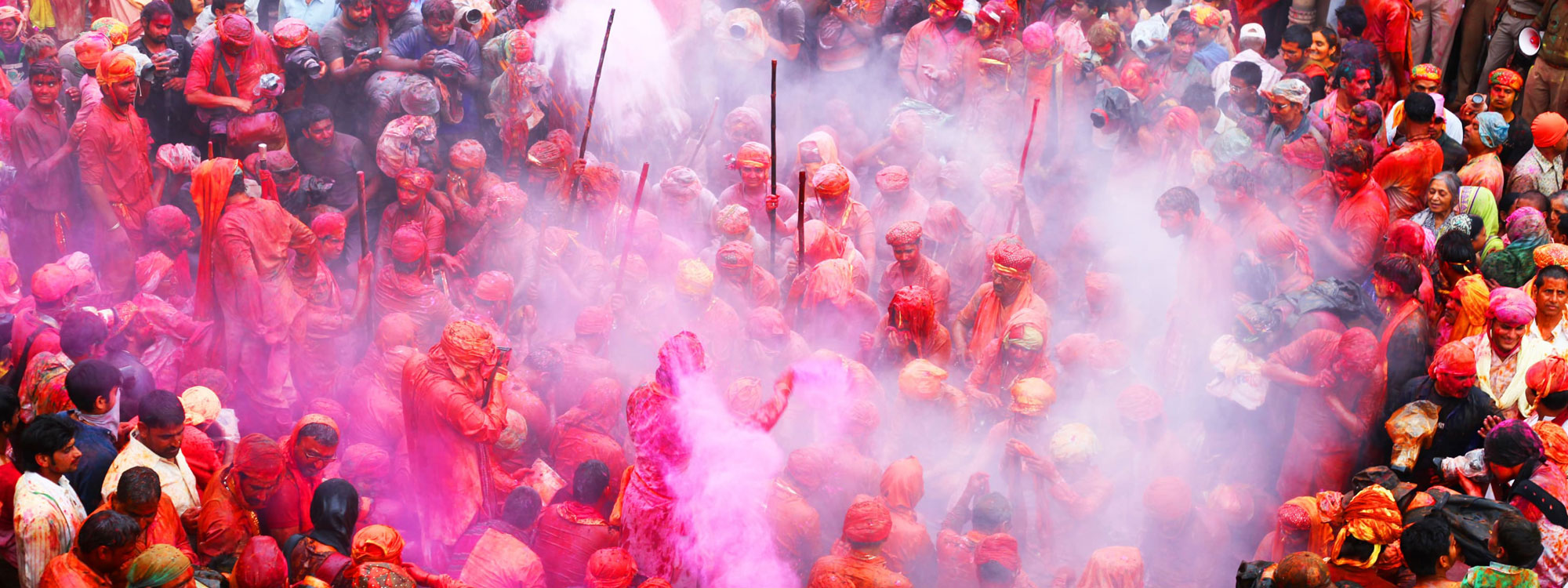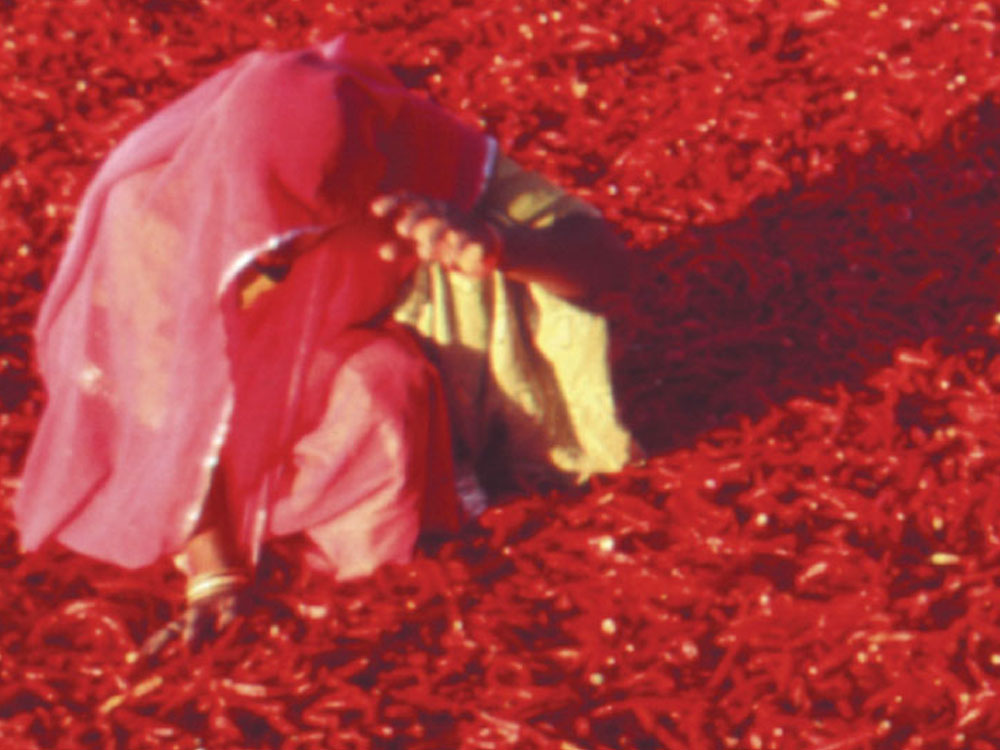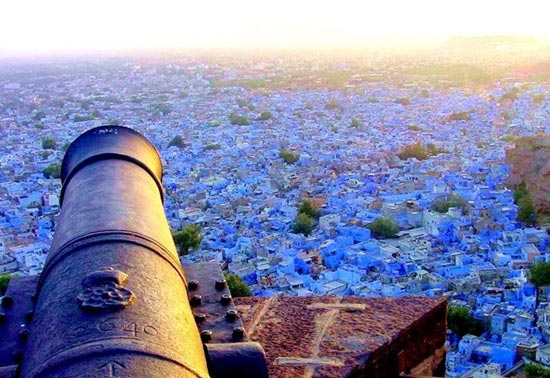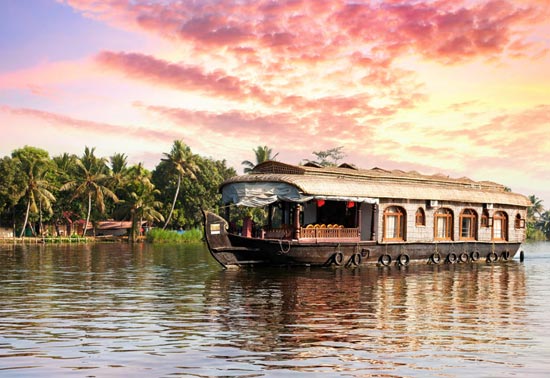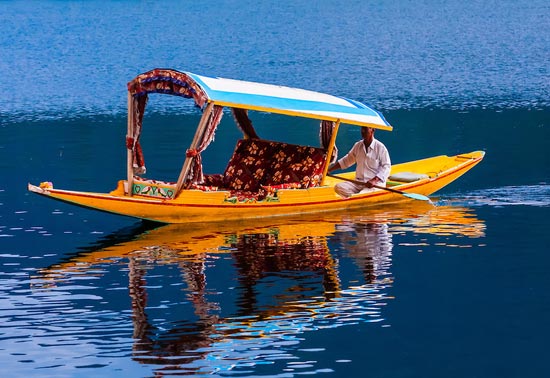All about India
"So far as I am able to judge, nothing has been left undone, either by man or nature, to make India the most extraordinary country that the sun visits on his rounds. Nothing seems to have been forgotten, nothing overlooked."
--Mark Twain, from Following the Equator
Travelling in India is essentially about this fulfilling freedom. And we at Prakriti Inbound celebrate this face of travel. Explore India with Prakriti Inbound - a travel agency that understands India, and your urge to discover. Explore India Travel Packages or contact us for creating your unique India travel experience
Geography & Climate
The subcontinent of India lies in south Asia, between Pakistan, China and Nepal. India is set apart from the rest of Asia by the Himalayas, the highest, youngest and still evolving mountain chain on the planet. The subcontinent as it is rightly called, touches three large water bodies and is immediately recognizable on any world map. This thick, roughly triangular peninsula defines the Bay of Bengal to the east, the Arabian sea to the west, and the India Ocean to the south.
Indian weather varies from The Tropical monsoon in south India, to the temperate in north India. The subcontinent has eight climatic zones all of which only have the monsoon rains in common. But even the monsoon comes to different parts of the country at different times. While the heat is unbearable in the Gangetic plain, the people of Ladakh shiver in the cold weather, while people in the south battle the rains.
Hence India can be seen any time of the year.
Area: 1,229,737 sq. mi. (3,287,590 sq. km) Approximately
Elevation extremes: The lowest point in India: Indian Ocean 0 m and highest point is Mount Kanchenjunga 8,598 metres above sea level.
India is huge. With 1.3 billion people, 29 states, 22 official languages, you definitely need a someone to guide you through this maze called India.
Largest Indian cities: Bombay (Mumbai) (2000 est.), 17,850,000 (metro. area); Calcutta (2000 est.), 12,900,000 (metro. area); Madras (Chennai) (2000 est.), 6,600,000 (metro. area); Hyderabad (2000 est.), 6,650,000 (metro. area); Bangalore (2000 est.), 5,500,000 (metro. area); Ahmedabad, 4,150,000; Kanpur, 1,874,409
Culture & People
With nearly 1 billion citizens, India is the second most populous nation in the world. It is impossible to speak of any one Indian culture, although there are deep cultural continuities that tie its people together. English is the major language of trade and politics, but there are 22 official languages in all and countless other dialects. India has seven major religions and many minor ones, six main ethnic groups, and countless holidays.
Religion is central to Indian culture, and its practice can be seen in virtually every aspect of life in the country. Hinduism is the dominant faith of India, serving about 80 percent of the population. About 12 to 13 percent worship Islam, and 5 percent are Sikhs and Christians; the rest (a good 45 million) are Buddhists, Jains, Bahai, and more.
Dress: Light and loose, easily laundered clothing is best for the south, and the northern plains, especially from April to September. You will need warmer clothes, including woolens, for the north during winter. Warm clothing is a must in the hill stations all year around.
Principal languages of India: Hindi (official), English (official), Bengali, Gujarati, Kashmiri, Malayalam, Marathi, Oriya, Punjabi, Tamil, Telugu, Urdu, Kannada, Assamese, Sanskrit, Sindhi (all recognized by the constitution). Dialects, 1,652
Accessibility
International airports in India:
Number | Name | State | Position |
1 | New Delhi | Delhi | North India |
2 | Mumbai | Maharashtra | West India |
3 | Kolkata | West Bengal | East India |
4 | Chennai | Tamil Nadu | South India |
5 | Bengaluru | Karnataka | South West India |
6 | Hyderabad | Telangana | South East India |
7 | Amritsar | Punjab | North West India |
8 | Guwahati | Assam | North East India |
9 | Patna | Bihar | North India |
10 | Goa | Goa | South West India |
11 | Gaya | Bihar | North India |
12 | Cochin | Kerala | South India |
13 | Thiruvananthapuram | Kerala | South India |
14 | Ahmedabad | Gujarat | West India |
15 | Vishakhapatnam | Andhra Pradesh | South East India |
16 | Vijayawada | Telangana | South East India |
17 | Tirupati | Andhra Pradesh | South East India |
18 | Srinagar | Jammu and Kashmir | North India |
19 | Mangalore | Karnataka | South India |
20 | Kannur | Kerala | South India |
21 | Kozhikode | Kerala | South India |
22 | Nagpur | Maharashtra | Central India |
23 | Pune | Maharashtra | West India |
24 | Imphal | Manipur | North East India |
25 | Bhubaneshwar | Odisha | East India |
26 | Chandigarh | Union territory | North India |
27 | Jaipur | Rajasthan | North India |
28 | Coimbatore | Tamil Nadu | South India |
29 | Tiruchirappalli | Tamil Nadu | South India |
30 | Lucknow | Uttar Pradesh | North India |
31 | Varanasi | Uttar Pradesh | North India |
32 | Bagdogra | West Bengal | East India |
Other than the above there are approximately 150 airports which operate domestically or by the defense services. The domestic airports have commercial flights which can be availed for travel.
India has one of the widest rail networks in the world. India has anywhere between 8000 – 8500 railway stations throughout. Rail travel is comfortable with four classes in one train serving the customers. Many train have their own pantry cars which provide fresh food.
Road network too is wide and strong across India. There are many luxury coaches, sleeper coaches, non-a/c coaches, state transport coaches which run through the maze of Indian roads. Short distances are preferred by road travel.
Apart from coaches there is ample choice of various vehicles. There are luxurious vehicles as well. The guests can have the choice of a/c and non – a/c vehicles as well. Drivers are well trained and know basic English.
All visitors, except those from Nepal and Bhutan, must have valid passports stamped with current visas. Visitors must register with the Foreigners’ Regional Registration Office within 14 days of arrival. Some countries have been granted Tourist Visa on arrival, but only some international airports are equipped with the facility.
Immigration
Visitors possessing more than US$ 10,000 (or the equivalent in travelers' cheques or bank notes) must fill in a currency declaration form. Visitors may bring in up to 200 cigarettes or 50 cigars, and one liter of alcohol, duty-free. Non-sporting firearms and narcotics are prohibited, as are gold bullion or coins (except by Indian nationals returning from working abroad, who may bring in a maximum of 5 kilograms).
The units of Indian currency are the Rupee and Paisa (100Paisa equal 1 Rupee). Paper money is in denominations of Rupees 1, 2, 5, 10, 20, 50, 100, 500 and 2000. Coins are in denominations of Rupees 1, 2 5 and 10.
ATM machines are easily found on the roads of India. All known Credit cards are accepted throughout India, in shops, hotels and restaurants.
Shopping
India is shoppers' paradise. From decorative items like pottery, masks, bronze items to jewelry can be purchased at reasonable rates in India. India is the largest producer of branded jewels which are exported and can be bought here at affordable rates.
Various types of silk is manufactured in India and is easily available at good shops. Embroidered cloth, leather items, various spices like pepper, cardamom, cloves, cinnamon and saffron, miniature paintings, wooden and marble objects, cotton clothes and much more.
If you have the taste for Indian food, ready to eat packets of various dishes are also easily available. Various pickles and snacks can be bought.
India also produces a huge variety of tea and you can get a good choice. Along with that you may also go for some herbal beauty products. Last but not the least; various music and cinema compact discs (CD) to keep your Indian sojourn going can be bought!
A GENERAL GUIDE TO HAVE A PLEASANT STAY IN INDIA
- Always carry your passport other travel documents in photocopies while traveling.
- You may keep the actual copies in the Hotel Safe where you are staying.
- Keep extra photocopies of the relevant pages of your passport, visa and travel insurance.
- Better to keep 12 passport size photographs handy, these may be needed to buy a sim card / hot spot etc.
- Always travel with a mosquito insect repellent.
- Be sure to carry your own medications with a relevant prescription.
- Inform your tour operator beforehand If you are allergic to a particular substance or a drug.
- Ensure that your luggage is waterproof, rains are unpredictable in India.
- Travel as light as possible Clothing and laundry are both affordable in India.
- Winters are pleasant in southern India while you will need heavy woolens as you progress in the Northern region.
- Summers are harsh throughout, so light cotton clothes are most comfortable.
- Smoking is prohibited at public places.
- All properties of the Indian Railways including Trains and railway stations are strictly non - smoking zones with stiff penalties for Violations.
- English is spoken at almost all tourist centers, but you can also request Government-Trained and approved guides who also speak Chinese, German, French, Spanish, Japanese, Italian or Russian.
- Best to avoid shorts / mini dresses for both men & women while visiting places of worship. Some places of worship may insist to cover your head as well. A small handkerchief or a scarf can suffice.
- You are a foreigner, chances are that you might be stared at, especially in the smaller towns. Don't feel offended-they mean no harm, it’s the curious human nature.
- In India, public toilets facilities are few and far between. Take every opportunity you can, to use a clean toilet in places such as hotels and restaurants. Make this a habit wherever you go.
- Don’t let beggars hassle you and do not encourage them by giving money.
- While making payments by credit / debit cards at any place, ensure the card is swiped in front of you.
HEALTH PRECAUTIONS:
- Always drink bottled water. There are many known brands available.
- It is advisable to request the waiter at the Hotel / restaurants to bring the sealed bottle at the table.
- The sun is strong. Remember to use sunscreen of exposed parts of the body. Wear Sunglasses to screen out harmful rays.
- The dry summer heat can drain you completely. Drink lots of water and fluids
- Try to avoid raw vegetables / fruits; if you have to, make sure you wash them properly.
- It would be best if you can eat fruits which can be peeled.
- Always carry a kit of the basic emergency medicines you might need for diarrhea, fever Etc. Also, band aids and an antiseptic ointment.
- Keep a mosquito repellent handy
- If you catch a viral, don’t panic, it will take its time and go away.
- Meanwhile try these simple precautions:
- Drink lots of fluids
- Take some electrolyte salt, easily available across the counters to keep yourself hydrated
- Drink the Yogurt drink – “lassi” or “Chaach”, It will help tone down the bacteria
- Eat plain rice with yogurt or try the simple “Khichdi”, an easily digestible dish made out of rice and lentils.
- Drink coconut water which is naturally cooling, sterilized and easily available across India.
FOODS AND DRINKS
- India is a foodie’s paradise and one can taste a variety of food veg and non-veg through the length and breadth of India.
- Try out the local flavours being cautious and taking your palate into account. Indian food at times can be really spicy.
- It is advisable to eat non-vegetarian food only at good hotels or restaurants.
- But if you want to try the street food, make sure it is prepared freshly in front of you
- Good quality vegetarian food is easily available.
- Curd or yogurt is normally served with food or is readily available. It is necessary as it is a natural aid to digestion and helps temper the spicy food
Sightseeing:
India has many UNESCO world heritage sites. There are many monuments other than the UNESCO sites which are protected by the Archaeological Survey of India (ASI). Do not forget to visit the small monuments as you may come across something beautiful at a very unexpected place. Village and animals are integral part of the Indian life. You can see stray dogs, cats, cows, donkeys and also camels and elephants at times on the busy roads.
- Photography is not always permissible at monuments, and at many places it is permitted only at a fee.
- There is usually a higher fee for using a video camera.
- Most museums in India are closed on Monday and Site Museums, those near Archaeological monuments, on Fridays.
- There is usually a day off for visitors at all the UNESCO and ASI monuments. Make sure you check before you reach to avoid disappointment.
Adhering to each faith, there are some beautiful religious places of worship spread all over India, which one should not miss. Temples, Mosques, Churches, Sikh and Buddhist temples and many other faith temples. Some are recently built while some are very old and many others are guarded by the UNESCO or the ASI.
- Follow the dress codes required at the religious places.
- These can include, covering your head, being barefoot, washing your hands and legs before entering the premises etc.
- Ask, so that you don't unwittingly give an offense.
- Some temples do not permit any leather articles at all on their premises.
- Certain temples are not open to Non-Hindus. Please check with the local tourist Information office.
There are many national reserves spread all over India which form a natural habitat to various species of Flora and Fauna. There are bird sanctuaries and national parks. Lions, tigers, Langoor, monkeys, Elephants, deer, Sambhar, Cheetah, Bear, peacock, Bison, Rhinocerous, Leopards, Alligators, snakes and many such animals can be sited in these jungles.
- Ensure you are pre-booked at the hotel / resort near to the park.
- Be sure the game drives are pre-booked with your name and passport details as it is necessary
- It is discouraged to wear perfumes during the game drive
- All the national parks in India are closed from 1st July to 30th September every year.
Tipping:
- Tipping India for guides / drivers / bell boys / porters etc are mandatory
- Some hotels include service charge on their bills. In such cases tipping is not necessary.
- Please check the bills before you pay
- The standard tip is 10%.
- In hotels, porters and room service attendants are normally tipped at the end of the stay,
- Tipping of taxi drivers is not customary.


